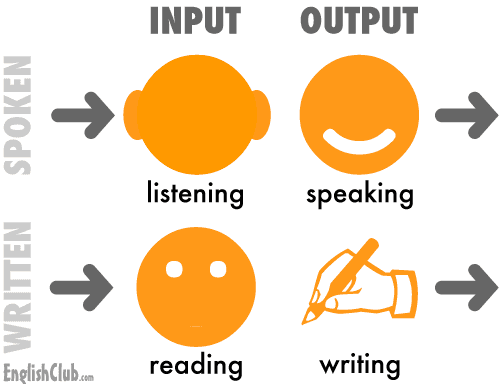The article I read this week focuses on incorporating speaking games into lessons and activities for English as an Additional Language (EAL) students. After reading the article, I thought these activities could closely relate to our ESL students and can be used in an ESL classroom setting. Adams (2020) mentions that these four games/activities offer a variety of learning styles to students and can be incorporated into lessons or simply a lesson idea on their own. Emotive drilling, Rotisserie, Treasure hunt, and Class surveys are the four speaking games Adams (2020) aims to discuss in the article.
Emotive drilling involves social skills practice. The students would be engaged in a variety of facial expressions that are presented on index cards (happy, sad, scared, etc.). In addition to the facial expression cards, there would also be cards with images that facilitate vocabulary and/or keywords to complete the activity. Essentially the game is somewhat simple. When you show the students an image on one of the keywords cards, you will then point at one of the faces on the facial expression cards and the students need to respond with the keyword in that emotion. For example, if the keyword is “bus” and the facial expression card is “sad,” then the student would respond “It’s a bus” in a sad way. Adams (2020) states that students find this activity very entertaining; because it makes them “WANT to say the words instead of HAVE to say the words” (para 7). I think this form of activity would be great to incorporate for ESL students because it focuses on vocabulary, speaking, listening, and social skills. I believe I could incorporate this kind of activity into my own classroom setting because teaching vocabulary through speaking activities is a huge goal in PreK.
Rotisserie is essentially how it sounds. Students would be engaged in the process of turning over multiple flash cards to practice different vocabulary/keywords. In order to complete the activity, one student would come up to a large table where all cards are displayed, chose a card, and then ask the class, “what is it?” The activity would continue until all cards have been turned over. This activity is great because it practices vocabulary but also helps students starts to move language from working memory into long term memory. I think this activity would be great to incorporate at the beginning of a unit where students are introduced to new vocabulary words. In addition, I would also include images/visuals with the flash cards during the beginning to help the lower level EL learners. As the activity progresses, some of the scaffolding can slowly be taken away depending on the students.
Treasure hunts involve images of items that are linked to a topic the students are learning or are vocabulary builder words. The teacher would hide the images around the classroom and instruct the students to search for them. Once the images are found, teacher will help the students move into groups and ask/tell each other what they found. During this process, I would definitely recommend monitoring the students to make sure they are on task and are repeating what they found. Adams (2020) believes this activity can be used after the students have been introduced to the language, as a way to “practice it more carefully and to ensure they fully associate and remember a word with the item in question, rather than having a prompt or someone else helping them” (para 16). I really like this activity because I think it allows the students to work together and practice their speaking skills with one another. Students not only will practice language skills but also social skills and peer to peer relationships.
Class surveys are remade surveys that ask the students a series of questions. The questions would revolve around specific vocabulary and keywords that the students have been discussing. This activity can be adapted for specific learners. For example, you may chose to have students walk around and ask each other the questions or simply have the students complete the questions on their own. This activity gives the students more freedom to use and explore the language they have been practicing and really build their fluency and ability to draw upon language with less support (Adams, 2020).
I believe these speaking games would be ideal to use with students at the elementary level because for many students their language skills are just beginning to blossom. However, I would still encourage the use of these activities for higher level students because they are great vocabulary building activities. I remember during my ESL observation hours, I observed a teacher at the high school level who was using flash cards with her students to practice vocabulary skills. ESL students need vocabulary practice throughout their language journey and as Adams (2020) states, these activities can be incorporated with students at varying ages and stages of language development. In addition, the students will eventually be able to lead these activities themselves and build independence and autonomy.

Adam, G. (2020, October). 4 EAL speaking games for early years and primary pupils. Retrieved from https://www.tes.com/news/eal-ideas-tips-speaking-lesson-fun-games


